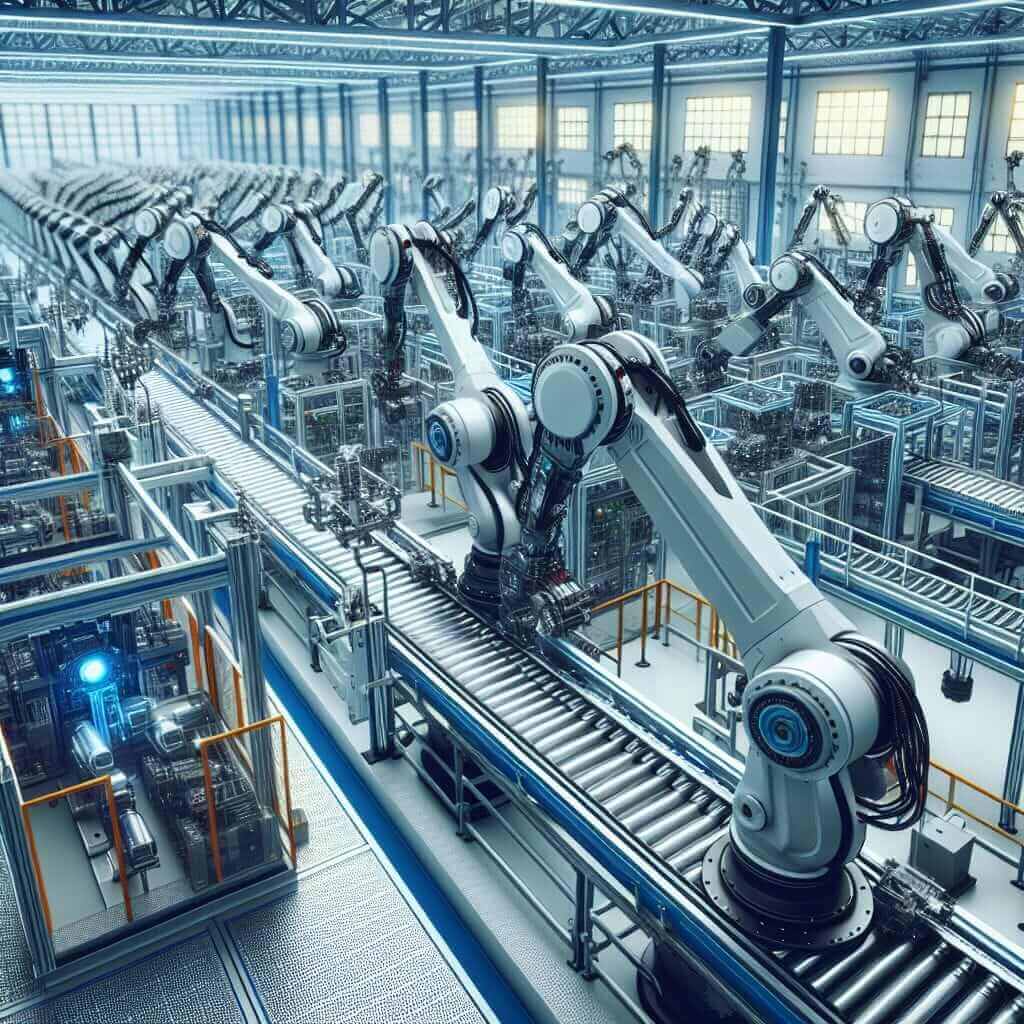The IELTS Reading section often includes texts on current societal issues, reflecting the increasing relevance of different topics such as automation in manufacturing. Topics related to technological advancements and their implications frequently occur in the IELTS exam. Given the rapid development and integration of automation in various industries, it’s plausible this subject could appear again in the future.
In this article, we will delve into the social implications of increasing use of automation in manufacturing, providing a sample IELTS Reading passage and questions for self-practice. We will also explore some vocabulary and grammatical constructions that might be crucial for tackling similar reading passages effectively.
Practice Reading Passage and Questions
Sample Reading Passage: Medium Text
Automation in manufacturing has brought about a significant transformation in the industry over the past several decades. This transformation not only pertains to the efficiency and productivity of manufacturing processes but also to the broader social implications.
Firstly, automation significantly reduces the need for manual labor, which could lead to widespread unemployment, especially for low-skilled workers. This shift poses a challenge to social structures, as many individuals may find it difficult to secure new employment without undergoing substantial retraining. Consequently, there is an urgent need for comprehensive retraining programs to help the workforce adapt to the changing job market.
Furthermore, the introduction of automation can enhance workplace safety by taking over dangerous tasks that were once carried out by human workers. This aspect is particularly beneficial in industries like mining, chemical manufacturing, and heavy machinery, where the risk of accidents is high. Although the replacement of hazardous jobs can be seen as a positive change, it simultaneously raises questions about the long-term employment prospects for those who previously relied on these jobs.

Another significant aspect is the economic divide that automation may exacerbate. As high-tech machinery and systems are costly, only large corporations can afford to implement them on a wide scale. This investment not only allows these corporations to boost their productivity and profitability but also creates a competitive imbalance between large and small companies. Small and medium enterprises (SMEs), unable to compete with their automated counterparts, might struggle to survive, leading to market monopolization by large corporations.
Lastly, the ramifications of increased automation extend to societal dynamics, influencing everything from urbanization to education systems. Urban areas may witness a boom in population as people migrate from rural areas in search of better training and job opportunities related to automation technology. Consequently, city infrastructures and services may face excessive strain, necessitating significant upgrades to handle the increase in population. Education systems, too, would need to be revamped to focus more on STEM (Science, Technology, Engineering, Mathematics) education to produce a workforce adept in handling future technological advancements.
Sample Questions
Multiple Choice
-
What is one negative societal impact of automation mentioned in the passage?
- A. Improved workplace safety
- B. Reduced unemployment
- C. Increased unemployment for low-skilled workers
- D. Enhanced production efficiency
-
How might small and medium enterprises be affected by increased automation?
- A. They will thrive alongside large corporations
- B. They might struggle to compete and survive
- C. They will benefit equally from automation
- D. They will monopolize the market
True/False/Not Given
-
Automation improves safety in the chemical manufacturing industry.
- A. True
- B. False
- C. Not Given
-
Retraining programs are unnecessary due to automation.
- A. True
- B. False
- C. Not Given
Matching Information
Match each implication of automation listed below with the correct effect mentioned in the passage.
A. Urbanization
B. Market Monopolization
C. Need for Enhanced Education
D. Reduced Manual Labor
- Leads to population growth in cities
- Small enterprises struggling to survive
- Increased focus on STEM education
- Potential increase in unemployment
Answer Key and Explanations
Multiple Choice Answers
- C. Increased unemployment for low-skilled workers
- B. They might struggle to compete and survive
True/False/Not Given Answers
- A. True
- B. False
Matching Information Answers
- A. Urbanization
- B. Market Monopolization
- C. Need for Enhanced Education
- D. Reduced Manual Labor
Common Errors
- Misinterpreting the passage: Ensure you understand the context before answering.
- Overlooking key details: Pay attention to specific mentions related to the questions.
- Confusing similar concepts: Distinguish clearly between associated terms and ideas.
Vocabulary
- Transformation (n): A thorough or dramatic change in form or appearance.
- /ˌtræns.fɔːrˈmeɪ.ʃən/
- Example: The transformation brought about by automation has both positive and negative effects.
- Retrenchment (n): The reduction of costs or spending in response to economic difficulty.
- /rɪˈtrentʃ.mənt/
- Example: Many companies faced retrenchment due to the economic crisis.
Grammar Focus
- Passive Voice: Used often to emphasize the action rather than who performs it.
- Example: “Automation has been implemented in many industries,” instead of “Industries have implemented automation.”
- Conditional Sentences: Useful for discussing hypothetical scenarios or consequences.
- Example: “If workers do not receive retraining, they may struggle to find new employment.”
Advice for Achieving a High Reading Score
- Practice Regularly: Familiarize yourself with different passage types and question formats.
- Improve Vocabulary: Regularly learn and use new words related to various IELTS topics.
- Time Management: Practice under timed conditions to enhance your reading speed and accuracy.
- Critical Thinking: Analyze and infer information rather than relying on superficial reading.
- Mock Tests: Take full-length practice tests to gauge your readiness and identify areas for improvement.
By following these guidelines and using the practice materials provided, you can better prepare for the Reading section of the IELTS exam and increase your chances of achieving a high score.